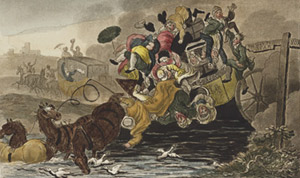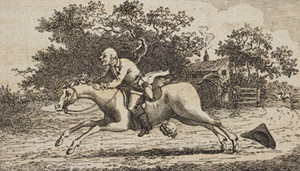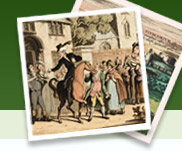‘Excursions in my Own Mind’: Poems and FictionsThe use of a journey to propel a fictitious narrative or lend a structure to dramatic events has been a recognized device in Western literature since the Odyssey, and in an at least nominally British setting since the quests of Arthurian romance. The possibility afforded by travelogues of portraying a wide-ranging and rapidly-changing cross-section of the population made them a common expedient of satirists, while poets’ journeyings have given rise to verse ranging from the reflective to the rollicking. Protagonists in eighteenth-century novels such as Henry Fielding’s Tom Jones and Tobias Smollett’s Humphry Clinker spent much time on the road, setting a tradition of which the popular highlight was Charles Dickens’s extraordinarily successful Pickwick Papers. The skill of great writers imaginatively to redefine particular locations has led enthusiasts to retrace their steps in search of the sources of their inspiration. 
The perils of overcrowding: a coloured aquatint by J. Bluck after a drawing by James Green, from Poetical sketches of Scarborough, London, 1813. Harley-Mason.b.47 
John Gilpin losing his hat and wig, but with the wine bottles as yet intact, an engraving from an edition of William Cowper’s ballad published around 1785. Keynes R.6.2 |

